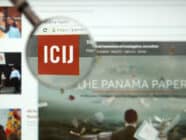How a U.S. non-profit organization strives to revitalize investigative journalism
A newly launched website invites us to witness how private foundation ProPublica strives to strengthen investigative journalism – i.e. reporting practices based on thorough research, sometimes aimed at exposing scandals: Propublica. In the United States, the public service provided by the media is becoming more and more contingent on philanthropical funding.
“Investigative journalism is at risk,” the website states. “Many news organizations have increasingly come to see it as a luxury.” This is why ProPublica intends to become active “in the public interest” whenever and wherever today’s newspaper publishers are running out of steam. Over the last few years, newsrooms shrunk by 20 to 30 percent, some even by over 50 percent. Hence, they lack the resources to do their own research on complex topics in order to uncover hidden scandal.
ProPublica intends to “produce journalism that shines a light on the exploitation of the weak by the strong and on the failures of those with power to vindicate the trust placed in them.” With their initiative, the founders are reacting to various prophecies of doom circulating in the U.S., as more and more people worry that the media may no longer adopt the public role of watchdog over democracy. In particular, during the Vietnam and Watergate eras the large U.S. newspapers were famous for standing up to those in power. Nowadays, those newspapers tend to hit the headlines themselves – for example because of the way they allowed themselves to be taken advantage of by the Bush administration during the War in Iraq, or because they are losing readers and advertising clients in droves.
Is it really possible to keep this culture of investigative journalism alive? Will support for a foundation like ProPublica help investigative practices to surface in the Internet Age? Theodore Glasser, Professor of Communication at Stanford University, thinks the ProPublica initiative is a “great idea,” but he stresses the fact that the “traditional business model of journalism doesn’t work anymore – a problem for which no solution has been found so far.”
In fact, after endless waves of layoffs the activities of such a foundation could never hope to make up for the losses sustained by the newsrooms of the major newspapers in terms of manpower and “institutional memory.” Editors might also feel tempted to reduce their own journalistic efforts simply because they are provided with first-rate stories by ProPublica – a risk that Richard Tofel, the general manager who works in close collaboration with Steiger, vividly denies. He says that for having such an impact, the project is much too small.
It is important to keep investigative journalism firmly rooted in the newsroom, and Nieman Reports tries to contribute to this tenet in its latest issue. The renowned U.S. quarterly on journalism demonstrates, with typical American pragmatism, the livelihood of watchdogs once presumed dead by many (despite all efforts of the Bush administration to put them on a leash and muzzle them for good). Barry Sussman, the editor overseeing the Nieman Watchdog Project, complains about how thin the ice has become. “If today a reporter gets three beats to cover when the average number used to be one,” he writes, “much wrongdoing is bound to remain undetected.”
The authors of the issue, all senior editors and veteran reporters, go on to compellingly show what continues to be possible in times of slashed budgets and reduced aspirations. Data mining, the effective use of databases in journalistic research, is an activity that (thanks to the Internet) has certainly become less time-consuming. Additionally, crowdsourcing, the online interaction with readers and other audiences, can substantially facilitate research on a specific topic – hence the newly coined term – indicating that it is actually an intelligent form of outsourcing, as part of the journalistic work is done by readers who act as external information providers.
Translation: Oliver Heinemann
Tags: funding, Investigative Journalism, Nieman Reports, ProPublica














































